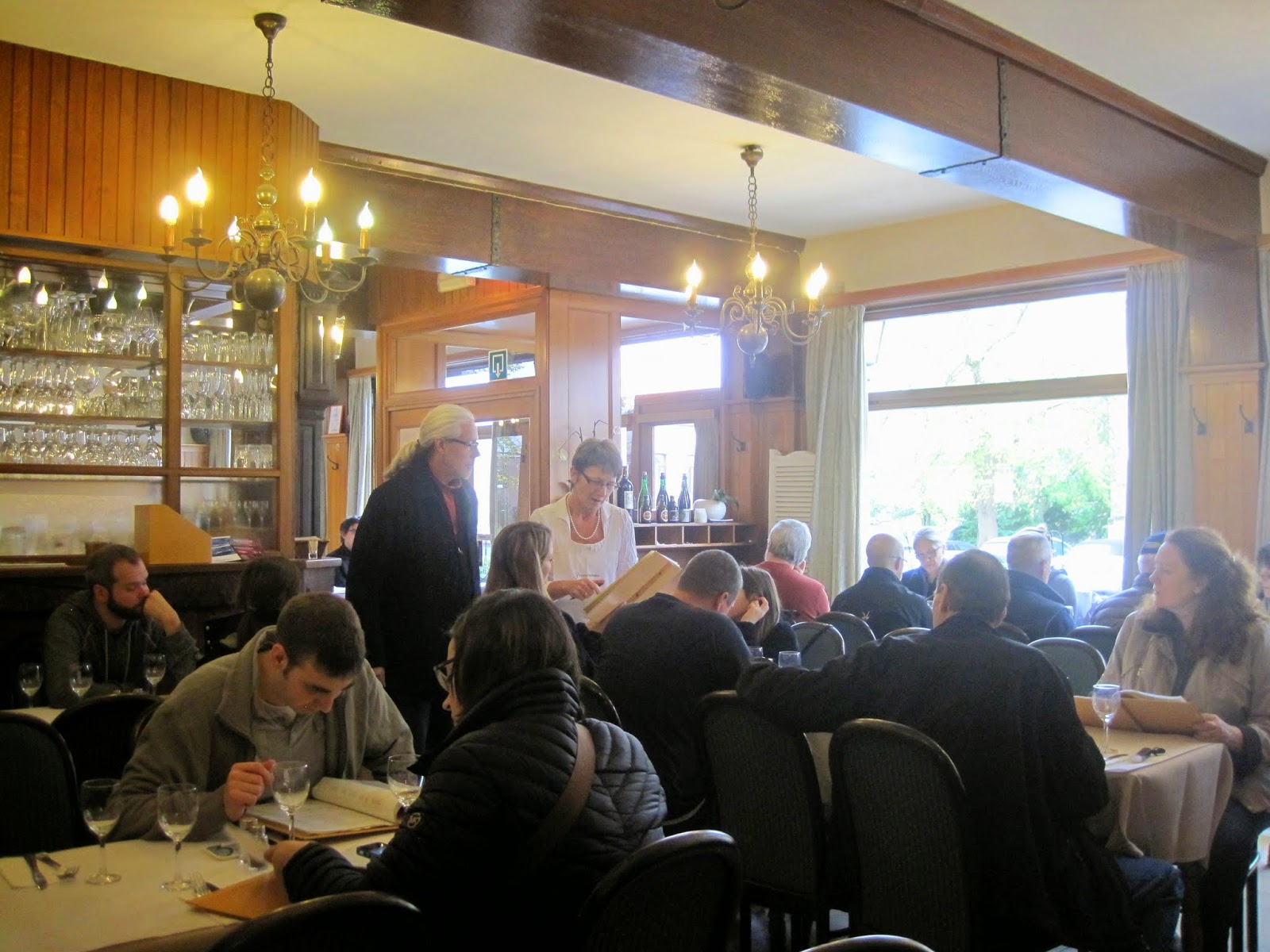 |
| Foggy Morning in Brugge |
Thus ends my account of a trip that has been on my bucket
list for many years. My affinity for Belgian beers began with Michael Jackson’s
book event in NYC sixteen years ago. It seems fitting that this story should
end as 2014 wears down to its final hours, but that wasn’t serendipity in
action. It was planned that way from the start.
We put old years behind us and look forward to the new,
hoping that the new will be as good or better than the one we just passed. And this
installment story was designed to get the reader to consider venturing out of
old “comfort zones” in terms of location, and especially in terms of what beers
to try.
 |
| "Down the alley" at Le Garre |
But in a sense, this story never ends as long as the search
for good beer and good people in good pubs continues.
As you might have been able to detect, I am happy that my
Belgian Dream trip came to pass
Someday…someday, I kept saying.
And suddenly, someday was here.
My dream trip is now a collection of memories and digital
pictures—recollections of new places, new foods and new people, including the
always delightful experience of making some new friends.
 |
| The Portinari "Lounge Lizards" |
I could get some Belgian beers and sit in my Barcalounger
(or yours) while drinking them, but it’s just not the same as drinking them
while looking at a four hundred year-old cobblestone street or a six hundred
year-old church from a five hundred year-old pub, all from a sidewalk, an
original mullioned window or a fireside seat.
And special is the memory of sipping a Duvel, a Delirium
Tremens, a Le Garre, a Kwak, a Tripel Karmeliet, a Chimay, a Westmalle Tripel,
a Rodenbach Classic or Grand Cru, a Boon Kriek, a Brugse Zot Dubbel, a
Westvleteren 12, a De Struise Double Black or a Timmerman’s in just the right
place, at just the right moment—and in
just the right glass.
Good memories like that are the nuggets we take out as we
age to warm ourselves, assuring our inner souls that a credo like “Life is not
a dress rehearsal” has true worth.
Regarding the photos in this five-part story, it was a
challenge to select the right photo to convey the right effect, without
overloading the story with pictures. With close to four hundred photos taken,
the “word” might have taken a back seat to the “image.” Yet, many folks just
love to look at pictures of faraway places, especially if they may be in them.
For those folks, this link will take you to three hundred pictures that convey
a sense of time and place. Many of them feature the places we visited and the
faces of people who were on this memorable trip. All of the pictures are
downloadable for free should any strike you as worth keeping. They can be found at this link.
Incriminating pictures or those showing subjects with closed eyes, open mouths or both have been saved to a special folder on a secret flash drive. Those pictures cannot ever be prised from my grasp--unless, of course, payback for a compromising picture of me is in order.
I used to say that anyone who is a true Beer Nut owes it to
himself to visit the GABF Festival in Denver at least once.
Same now goes for Belgium.
 |
| May your Kwaks be ever near in 2015! |
So when are you going?
Larry Porter does this trip every year. Contact him at Porters' Pub in Easton, PA.
Tell him The PubScout sent you.
Then run like hell.
And if you get to Cafe Vlissinghe, tell Bruno, Steffi or Willem that The PubScout sent you.
Then run like hell, but mind the canal.
Thanks for reading, and have a blessed, happy, healthy and
prosperous 2015.
Cheers!
The PubScout























